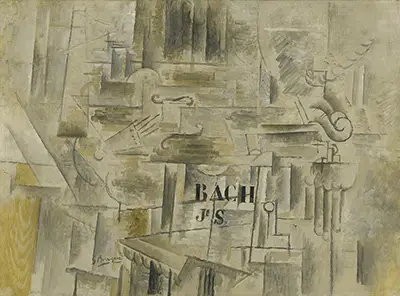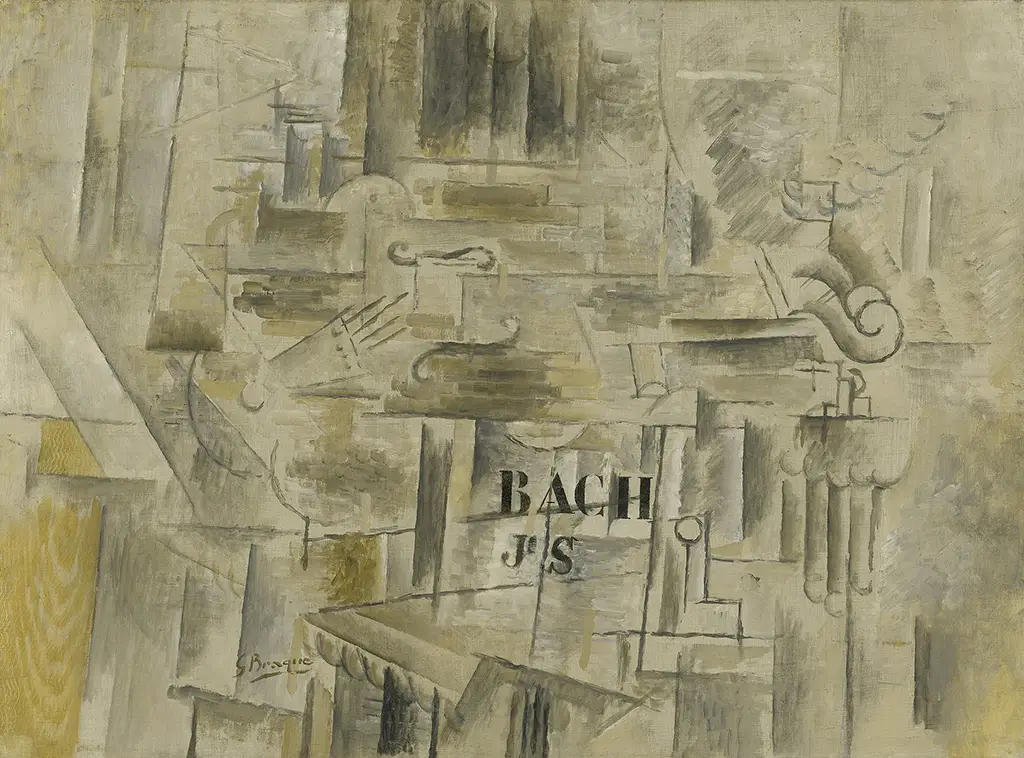The painting is dated as 1912, making it a relatively early cubist piece from this artist, who has originally been working as a fauvist painter, with similarities to the work of Matisse and Delaunay. He was now set on a course where colour was not key, but instead it was the fractured form of cubism on which he would be concentrated. Immediately, we notice the alternative colour scheme with relatively drab tones of grey and a sort of dirty mustard colour, far gone from the tones of purple and yellow found in his fauvist pieces such as Landscape at La Ciotat, Yellow Seacoast and L'Estaque. The landscapes were now a thing of the past, and cubist still life was the way to go, with some influence from Cezanne but also from present artists, most notably Picasso, with whom Braque worked very closely in order to formulate this new artistic movement.
Braque had initially worked a number of trades before becoming a professional artist, which perhaps explains his modest behaviour. Whilst there he learnt several techniques that he would later make use of within his own art, such as the faux-wood grain effect that we find in the lower left hand side of this painting, as well as the stencilled lettering which produced the musician's name. Interestingly, he was also a musician of some note himself, and so would have been particularly knowledgeable about the achievements of Bach, one would expect. This connection of music and art will remind some of the Swiss artist Paul Klee, whose work included this abstract form of music. Klee himself would also derive colour from sound and looked into various theories around that during his own career.
Braque was clearly proud of his work here, as well as his love of Bach, as he signs this piece in fairly large lettering, which was unusual for him at this time. It was constructed in oil on canvas, as typical for him, and is 73cm wide by 54cm, which is again fairly consistent within his overall career. The piece has changed hands on a number of occasions, via exchanges between different private collections. If we study the piece itself, we see elements of the violin from time to time, mostly merged into the items that surround it. We can certainly make out the bottom left and bottom right elements of the instrument, along with the top. Much is reduced to high levels of abstraction, though.



